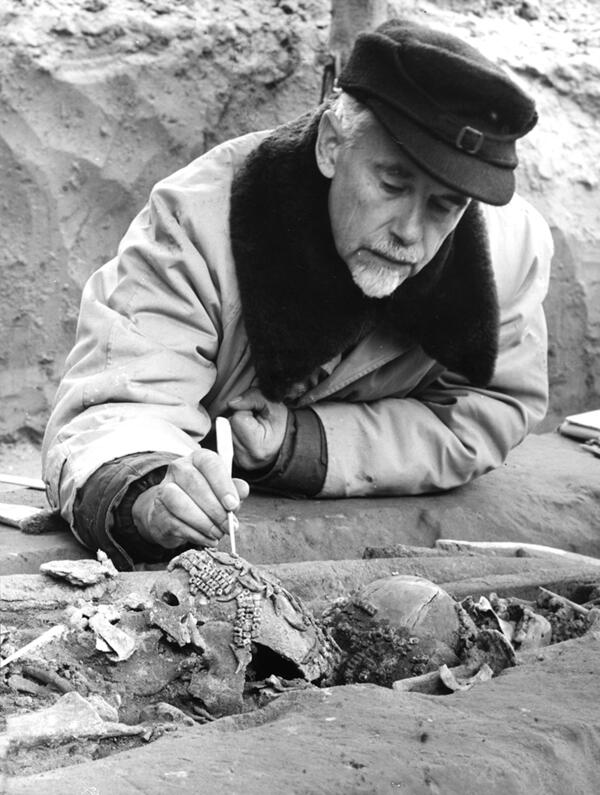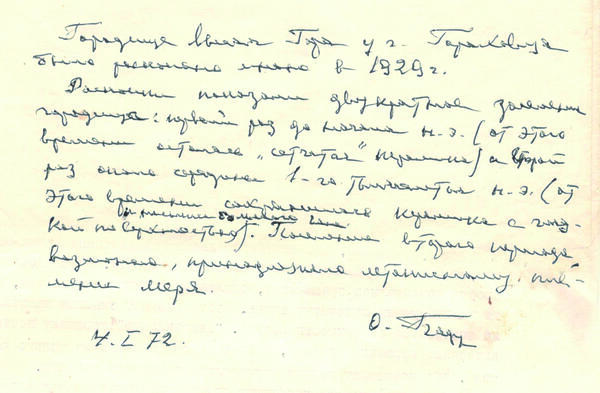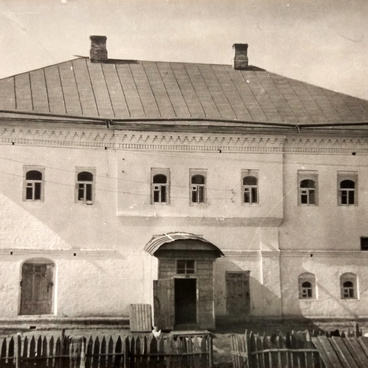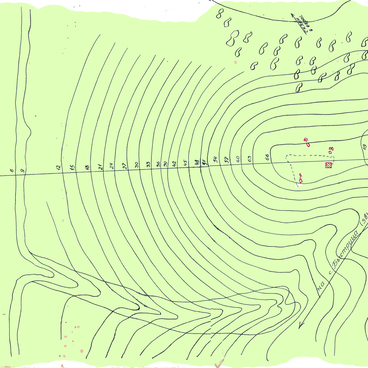The Russian archaeologist Otto Nikolayevich Bader was born in 1903 in the village of Aleksandrovskoye, Poltava Governorate. He graduated from a gymnasium in the town of Bely, where he organized the first local history society. Between 1922 and 1926, Otto Bader majored in Archaeology at the Faculty of Sociology of Moscow State University.
In 1924, he headed the archaeology section of the Museum of the Central Industrial Region in Moscow, and from 1927, for three years, he worked as an archaeologist in the museum department of the Central Administration for Scientific, Scholarly-Artistic, and Museum Institutions of the People’s Commissariat for Education.
Otto Nikolayevich Bader helped organize archaeology sections in many regional museums. He created the Perm school of archaeology and headed expeditions that explored monuments from the early Paleolithic to the late Middle Ages.
In 1929, the scientist got interested in Lysaya Gora in the vicinity of Gorokhovets: he refuted the legend of the hill being the burial site of the Kazan Khan, proving its natural origin. After that, Bader went to study the Stone Age monuments on the Crimean Peninsula, including the Volchy cave. When World War II started, Otto Bader went off to war as part of the Moscow State University militia, but in late 1941 he was withdrawn as an ethnic German and sent to the Nizhny Tagil labor column.
After the war, Otto Bader was entrusted with the leadership of the Kama and Votkinsk archaeological expeditions. The researcher studied wall paintings in the Kapova Cave, described the Kama Mesolithic and Kama Neolithic cultures, and developed a periodization of the Stone, Bronze and Early Iron Ages in the Urals.
In 1957, he worked at the Paleolithic site of Sungir, where he found graves that would soon become famous. In the 1960s — early 1970s, he systematized the information and characteristics of the archaeological monuments of the Volga and the Urals and contributed to the development of their problematics as an independent scientific direction in the studies of the Bronze Age of the Volga-Ural interfluve and the northern part of Western Asia.
The Russian archaeologist Alexander Alexandrovich Formozov reminisced,
In 1924, he headed the archaeology section of the Museum of the Central Industrial Region in Moscow, and from 1927, for three years, he worked as an archaeologist in the museum department of the Central Administration for Scientific, Scholarly-Artistic, and Museum Institutions of the People’s Commissariat for Education.
Otto Nikolayevich Bader helped organize archaeology sections in many regional museums. He created the Perm school of archaeology and headed expeditions that explored monuments from the early Paleolithic to the late Middle Ages.
In 1929, the scientist got interested in Lysaya Gora in the vicinity of Gorokhovets: he refuted the legend of the hill being the burial site of the Kazan Khan, proving its natural origin. After that, Bader went to study the Stone Age monuments on the Crimean Peninsula, including the Volchy cave. When World War II started, Otto Bader went off to war as part of the Moscow State University militia, but in late 1941 he was withdrawn as an ethnic German and sent to the Nizhny Tagil labor column.
After the war, Otto Bader was entrusted with the leadership of the Kama and Votkinsk archaeological expeditions. The researcher studied wall paintings in the Kapova Cave, described the Kama Mesolithic and Kama Neolithic cultures, and developed a periodization of the Stone, Bronze and Early Iron Ages in the Urals.
In 1957, he worked at the Paleolithic site of Sungir, where he found graves that would soon become famous. In the 1960s — early 1970s, he systematized the information and characteristics of the archaeological monuments of the Volga and the Urals and contributed to the development of their problematics as an independent scientific direction in the studies of the Bronze Age of the Volga-Ural interfluve and the northern part of Western Asia.
The Russian archaeologist Alexander Alexandrovich Formozov reminisced,




